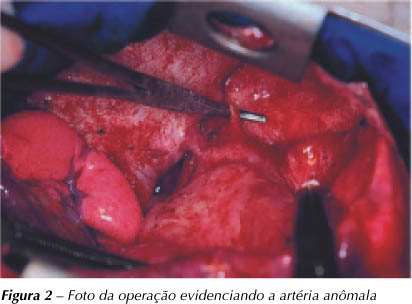Background: Pulmonary sequestration is a congenital anomaly involving the pulmonary parenchyma and its vascularization, and it presents as extralobar or intralobar. Aim: Describe the cases treated at the Institute of Heart (InCor) and Clinical Hospital of the Medical School of the University of São Paulo (FMUSP). Method: Retrospective analyses of the files of the patients treated over the 10-year period taking demographic, clinical and laboratorial data. Results: The patients were recurrent pulmonary infection and hemoptysis were frequent clinical findings in these patients. All cases were intralobar. The main localization was the left lower lobe (66%). Only one diagnosis was made intra-operatively. In the other eight cases, diagnosis was suggested on chest radiographs (100%) and confirmed by angiography (77%) and computed tomography (66%). Lobectomy (77%) was the most common surgical treatment, with low post-operative morbidity, and no mortality. Anatomic and histologic examination was performed in seven cases and confirmed the pathology. Conclusion: Pulmonary sequestration is an uncommon entity, in which the computed tomography and the angiography are the radiological investigations that provide the most information to a definitive and secure diagnosis. Resection of the involved tissue leads to excellent results.
Radiography; Angiography; CT scan by X-rays; Pulmonary artery; Pneumonectomy; Lung diseases




